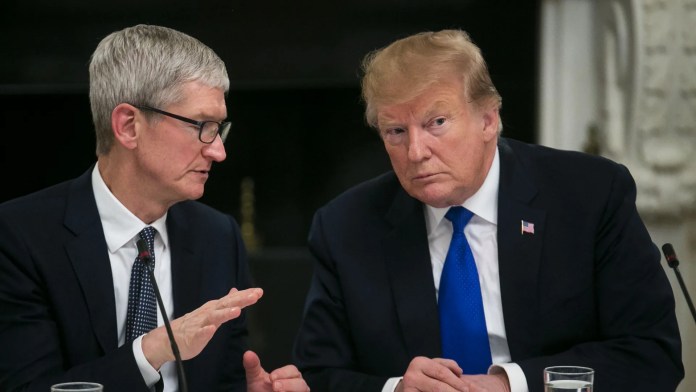- Bulk of Apple’s actual production remains in Asia, mostly China, with ongoing supply chain diversification extending to Vietnam, India, and Thailand.
- Apple has also inked a supply deal with Samsung for advanced chips from its Texas facility for future iPhones.
Apple’s bold pledge to inject an additional $100 billion into US operations is generating major headlines—and lots of speculation.
The new commitment, announced by President Donald Trump, takes Apple’s promised investment in the United States to a staggering $600 billion over the next four years.
The company is already well underway on a $500 billion initiative aimed at expanding its workforce by 20,000 employees and extending its domestic manufacturing presence.
The announcement appears designed to underscore Apple’s willingness to respond to policy signals and stave off the threat of new tariffs, especially those looming 25 per cent tariffs on goods produced overseas.
High-tech re-shoring
During the Oval Office event, Trump hailed the move as a clear sign that tech giants are “coming home,” emphasising his administration’s drive for high-tech re-shoring.
Meanwhile, Apple CEO Tim Cook highlighted the substantial American roots already present in many iPhone components: semiconductors, glass, and Face ID modules are all produced domestically.
“Today, we’re proud to increase our investments across the United States to $600 billion over four years and launch our new American Manufacturing Program,” said Cook.
“This includes new and expanded work with 10 companies across America. They produce components that are used in Apple products sold all over the world, and we’re grateful to the President for his support.”
Samsung to supply chips
Today, Apple partners with thousands of suppliers across all 50 states, supporting more than 450,000 supplier and partner jobs.
However, Cook was upfront when asked about assembling entire iPhones stateside—final assembly, he acknowledged, will remain abroad “for a while.”
Industry analysts have been quick to point out that, while the $100 billion headline is impressive, it’s still in line with Apple’s historic spending.
More importantly, although Apple has long publicised US-based manufacturing efforts—in Texas, for example—many of these operations predate recent White House visits and announcements.
The bulk of Apple’s actual production remains in Asia, mostly China, with ongoing supply chain diversification extending to Vietnam, India, and Thailand.
That said, there is genuine muscle behind Apple’s push to strengthen domestic partnerships. The firm’s latest investment wave includes major players like Corning, Applied Materials, Texas Instruments, GlobalFoundries, and Broadcom.
Notably, Samsung has also inked a deal to supply advanced chips from its Texas facility for future iPhones, with Apple stating these chips will help optimise device performance and power efficiency.
This comes on the heels of Tesla’s $16.5 billion chip supply agreement with Samsung—another sign that US-based chip manufacturing is suddenly in high demand.
Savvy manoeuvres
The US silicon supply chain is on track to produce more than 19 billion chips for Apple products in 2025. That includes TSMC in Arizona, which is producing tens of millions of chips for Apple using one of the most advanced process technologies in America. Apple is this factory’s first and largest customer.
Yet, despite political rhetoric and expanded supply chain deals, few experts believe that fully domestic iPhone production is likely any time soon. The costs and technical complexity are still enormous, with labour and logistics posing high hurdles.
Ultimately, analysts see Apple’s large-scale pledges as savvy manoeuvres to manage political expectations and sustain the company’s technological edge while navigating an increasingly fragmented global trade landscape.
Discover more from TechChannel News
Subscribe to get the latest posts sent to your email.




